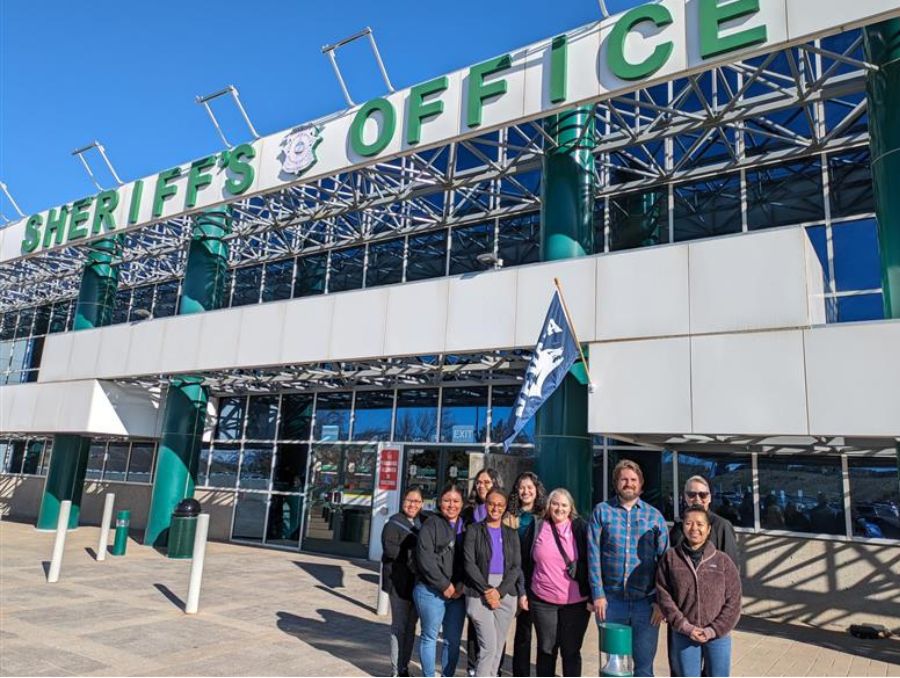Tamzen Stringham, professor at the University of Nevada, Reno in the Department of Agriculture, Nutrition and Veterinary Sciences, is part of a multi-agency team of scientists who have been awarded the 2013 Secretary of Agriculture's Honor Award. The team, called the Interagency Ecological Site Implementation, consists of professionals from the Natural Resources Conservation Service, the U.S. Forest Service and the Bureau of Land Management.
"The ecological site team is made up of professionals from around the country who each have more than 15 years of experience in the field," Stringham said. "The team was initiated to provide guidance and direction to BLM, USFS, and Natural Resources Conservation Service to cooperatively identify and describe rangeland ecological sites in response to the direction from Congress in the Department of the Interior and Related Agencies Appropriations Act of 2002."
An ecological site is a classification system that divides landscapes based on their potential and ability to produce different types and amounts of vegetation. Rangeland ecological sites are used to monitor, evaluate and manage the nation's rangelands.
Stringham and the team have worked for more than a decade refining the components of the ecological site description, providing trainings on how ecological sites are developed and improving management of our nation's rangelands.
"The award indicates that Stringham is conducting high-quality and relevant research which has gained her a strong national reputation and is having an impact on federal and state policy," Ron Pardini, interim dean of the University's College of Agriculture, Biotechnology and Natural Resources, said.
In January 2013 the Interagency Ecological Site Handbook for Rangelands was finalized providing a standardized method to define, delineate and describe terrestrial ecological sites on rangelands. While the team had been working on the project for many years, the handbook was not signed into policy until May 2013 when the Natural Resources Conservation Service, Forest Service and BLM issued the Rangelands Interagency Ecological Site Manual be developed to standardize and define ecological sites.
Stringham's primary contribution to the rangeland ecological site effort is her research work focused on the response of rangelands to management actions or natural disturbances such as wildfires. Each site description contains a model that details how the vegetation and soils of the site respond to various disturbances and whether or not the site will self-repair or require restoration. Stringham and her team are working on models for over 20 million acres of Great Basin rangelands.
"My piece has been the development of state-and-transition models that describe the ecological dynamics of rangeland ecosystems and how they respond to disturbance," Stringham said. "After the ecology has been damaged, there are some things we can fix and some things we can't fix and that is the reality of the world we live in."
There is a significant interest and need for models provided in the ecological site descriptions. The state of Nevada is 87 percent publically owned and the BLM is the primary land management agency.
Wildland fire is a significant concern in Nevada. The models that Stringham developed for rangelands in Nevada within the last four years have been used by BLM and NRCS to help guide fire rehabilitation efforts on the Holloway and Long Draw fires that burned over 1 million acres in 2012.
"We can't get these models to them fast enough," Stringham said. "We have finished models for 7 million acres and plan on finishing another 7 million by Dec. 31. My team is currently working on models for an additional 8 million acres of Nevada and plan on starting additional acreages this spring."
Stringham is also part of a new Interagency team led by the National Resource Conservation Service called the Riparian Ecological Site Interagency Team. The team is working on creating a new handbook that will provide standardized methods for defining and delineating riparian ecological sites on rangelands.
"We are hopeful we will have the Riparian handbook done in two years, not the five to eight years the last handbook took," Stringham said.
Stringham was not expecting the team to receive the Secretary's Honor Award. The award is the highest honor awarded by the Secretary of Agriculture to recognize those who have made significant contributions to the Agricultural industry.
"I was surprised," she said. "I had no idea about the award until I received the email. I was very happy for the members of the team who have dedicated a significant amount of their time to this project over the last many years."
The award will be presented to the ecological team at the 65th Secretary's Honor Award Ceremony in Washington D.C.











